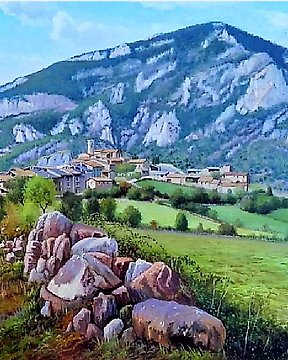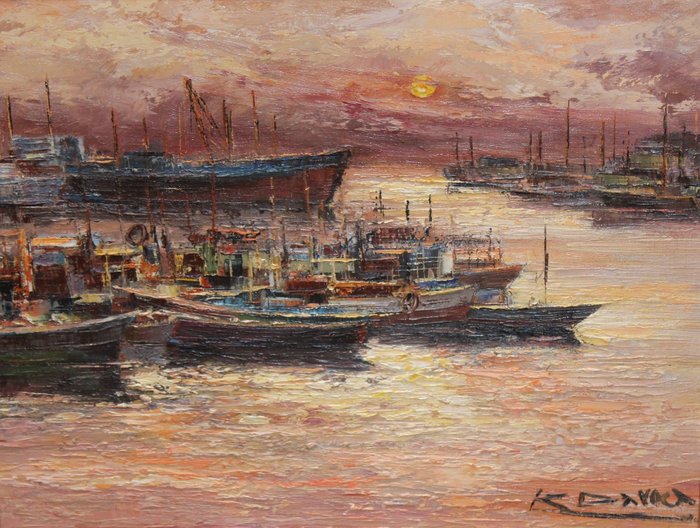
Jose M. Perez Enero (1944-2009) - Pueblo pirenaico
Nr. 81887599

Nr. 81887599

Provenance: private collection in EU
Signed by the artist at the bottom
On the back, it is again signed, dated 1985 and titled "Contraluz, atardecer"
The work is presented framed, to be considering as a gift.
Measurements work: 33 cm. high x 41 cm. Wide
Frame measures: 56 cm. high x 64 cm. Wide
:::::::::::::::::::::::::::::::::::::::::::::::: :::::::::::::::::::::
Artist Biography:
Rafael Daroca was born in Xàtiva (a city in the province of Valencia, Spain) in 1927. After a hard childhood, marked by the civil war and the postwar period, he began learning what his profession would be in the future: painting. . Of self-taught origin and founding member of the Sait group, he came to study at the Sancarlos Academy of Fine Arts, although he had to drop out due to family problems. During the period between 1950 and 1957 he dedicated himself to perfecting his technique, taking advantage of all available circumstances to create his own language. The following two years are dedicated to making a series of trips to different European countries, which provide him with some very important experiences. In 1960 he established his residence in Paris, a city then considered the center of world art. Already in Paris and holding exhibitions regularly, he definitely consolidates his artistic training.
For Rafael Daroca, painting is like life, from which one is always learning, or as Antonio Machado would say: "to say something with one's own voice, in an animated response to contact with nature, thinking that man can surprise some words from a intimate monologue, distinguishing the living voice from the inert echoes.
In 1968 he returned to Spain, establishing his residence in Xàtiva. From this date he regularly holds exhibitions in Barcelona, Madrid and Valencia. The painter's studio is located in the countryside, near Xàtiva, so as not to lose contact with nature.
The work of Rafael Daroca is found in numerous private collections, having been disseminated by the following Galleries: Salones Macarrón (Madrid), Estil Gallery (Valencia), Kreisler Gallery (Madrid), Maisson des Jeunes et la Culture (Paris), Arlette Gallery Chabeaud (Paris), Emerging Art. Inc. Gallery New York (USA), Gallery Greco Art Corporation (San Diego, USA), Galerie MiLa palette del pintorlord (Berna), Artesia Gallery (Switzerland), Sala Jaimes (BArcelona), Gallery Greco (Tijuana, Mexico), Galerie La Librerie de Paris, Sala Pizarro 8 (Valencia), Galería Verona (Madrid), Sala Crismon (Valencia), Sala Enarros (Castellón), Sala Llorens (Barcelona), Sala de Arte de El Corte English (Valencia, Madrid, Malaga), El Campanar Gallery (Castellón), Mayte Muñoz (Madrid). He has attended the following collective biennials: Autumn Salon (Valencia), National Exhibition of Fine Arts (Madrid), National Painting (Alicante), Gran Prix de Paris, Salón dÍndependents (Paris), Collective of Spanish Painters (Paris), etc...
In 1997, UNESCO published a CD-ROM on Ibero-American Art that includes the best painters and artists from 1900 to 1990 in Spain and Latin America. Rafael Daroca has a place in this work and contributes 7 of his best paintings to its content.
Hvordan kjøpe på Catawiki
1. Oppdag noe spesielt
2. Legg inn det høyeste budet
3. Å gjøre en sikker betaling